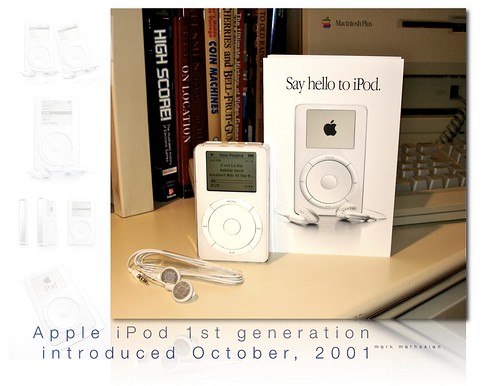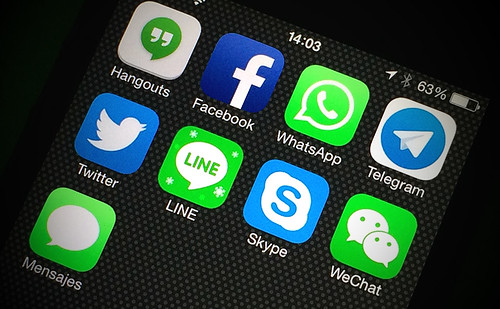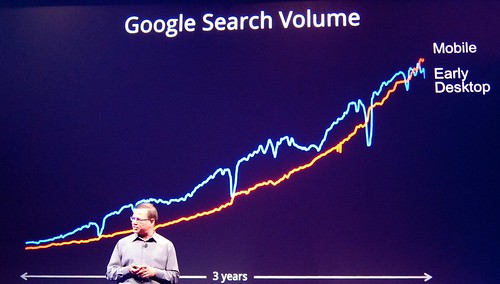
E-reader ownership has dropped significantly in the US. Photo by Simply Bike on Flickr.
You can now sign up to receive each day’s Start Up post by email. You’ll need to click a confirmation link, so no spam.
A selection of 11 links for you. Use them wisely. I’m charlesarthur on Twitter. Observations and links welcome.
Alphabet’s Google to fold Chrome OS into Android » WSJ
Great exclusive by Alistair Barr:
Alphabet Inc.’s Google plans to fold its Chrome operating system for personal computers into its Android mobile-operating system, according to people familiar with the matter, a sign of the growing dominance of mobile computing.
Google engineers have been working for roughly two years to combine the operating systems and have made progress recently, two of the people said. The company plans to unveil its new, single operating system in 2017, but expects to show off an early version next year, one of the people said.
Also says that Chromebooks will be renamed, but Chrome the browser will retain its name. So this would leave Apple, with the iOS-OSX split, as the only one with separate OSs. It seems Android will get primacy on the desktop. What, though, does that mean for Chromebooks and the progress they’re making in the education market?
link to this extract
Tablet shipments decline by 12.6% in the third quarter as many vendors get serious about moving from slate offerings to detachables » IDC
At the close of 2014, IDC estimated the installed base of tablets to be 581.9m globally, which was up 36% from 2013 but slowing quickly. With mature markets like North America, Western Europe, and Asia/Pacific well past 100m active tablets per region, the opportunities for growth are getting fewer.
“We continue to get feedback that tablet users are holding onto devices upwards of four years,” said Ryan Reith, Program Director with IDC’s Worldwide Quarterly Mobile Device Trackers. “We believe the traditional slate tablet has a place in the personal computing world. However, as the smartphone installed base continues to grow and the devices get bigger and more capable, the need for smaller form factor slate tablets becomes less clear. With shipment volumes slowing over four consecutive quarters, the market appears to be in transition.”
In response to these challenges, the industry is seeing growing interest from vendors in new form factors, with detachable tablets becoming a clear focus for many. While detachable tablets have held just a single digit percentage of the overall tablet market, IDC expects this share to increase dramatically over the next 18 months. However, the shift toward detachables presents some new challenges. In particular, the mix of traditional PC OEMs that are evolving their portfolios to include detachables will face pressure from the traditional smartphone OEMs, many of which have become accustomed to delivering extremely low-cost products.
Apple is kinda-sorta doing the detachable thing with the iPad Pro, but the detachables market really looks like one where Windows devices are best placed. So will IDC start calling them PCs or tablets?
link to this extract
The online ad scams every marketer should watch out for » Harvard Business Review
Ben Edelman has a collection of subtle and less subtle ways that you could spend far too much. This is the first, and in some ways the most obvious:
A first manifestation of the problem arises in sponsored search. Suppose a user goes to Google and searches for eBay. Historically, the top-most link to eBay would be a paid advertisement, requiring eBay to pay Google each time the ad was clicked. These eBay ads had excellent measured performance in that many users clicked such an ad, then went on to bid or buy with high probability. But step back a bit. A user has already searched for “eBay.” That user is likely to buy from eBay whether or not eBay advertises with Google. In a remarkable experiment, economist Steve Tadelis and coauthors turned off eBay’s trademark-triggered advertising in about half the cities in the U.S. They found that sales in those regions stayed the same even as eBay’s advertising expenditure dropped. eBay’s measure of ad effectiveness was totally off-base and had led to millions of dollars of overspending.
Others include retargeted display ads, affiliate cookies and adware.
link to this extract
Microsoft Band 2 review: An identity crisis on your wrist » The Verge
after wearing the newest version of Microsoft Band for the past three weeks, I can’t help but think that the real answer [to why Microsoft made it at all] is that Microsoft isn’t in it for the hardware. Instead, my best guess is that it hopes to get people using the Microsoft Health software — and maybe get some other hardware makers to make stuff for its platform. Despite welcome improvements over last year’s Microsoft Band, this new Band sort of baffles me.
It’s been redesigned, but is only slightly less clunky than before. It’s a fitness tracker, but with the short battery life of a smartwatch. It works with surprisingly great software, but good luck syncing your data to said software. On top of that, it’s more expensive than last year’s Microsoft Band — $249, up from $199 — and more expensive than a lot of other step-counters. The argument there is that it’s not as costly as a smartwatch or a high-powered dedicated fitness watch, but considering that at this point it could be perceived as an also-ran, you’d think Microsoft would aim for a more appealing price point.
It all leaves me wanting to like the Microsoft Band, but I can’t say I’d spend $249 on it.
So pricey, clunky, battery life comparable to things that do more.. what’s not to love?
link to this extract
US smartwatch market not ready for prime time yet » Kantar Worldpanel
Smartwatches have been on the market for several years. The Pebble Smartwatch debuted in 2012, establishing the category as it is known today. Yet, only 1% of the current smartwatches now in use in the U.S. were purchased in 2013, and 14% were bought in 2014.
Smartwatch ownership follows the classic early adopter profile – more than two-thirds of smartwatch early adopters are male, and one out of three are between the ages of 25 and 34. Vendors like Apple use greater attention to design and personalization to appeal to non-tech lovers. The results of those efforts have not yet completely materialized.
“Looking at where smartwatches have been purchased, the channels preferred by buyers have more in common with other consumer electronics goods than with jewelry,” said Carolina Milanesi, chief of research at Kantar Worldpanel ComTech. “33% of smartwatch buyers got them online, 17% bought them from a consumer electronics store, and 11% of owners received their smartwatch as a gift.”
Survey conducted in August, but the principal complaint among non-buyers was price. Meanwhile, 92% of those intending to purchase associate Apple with the category. Thin times for Android Wear.
link to this extract
U.K. government: no end-to-end encryption please, we’re British… » TechCrunch
Speaking during a debate on encryption in the House of Lords yesterday, Baroness Shields, the Minister for Internet Safety and Security — and a former European VP at Facebook — dubbed the rise of end-to-end encryption as “alarming”.
“There is an alarming movement towards end-to-end encrypted applications,” she said. “It is absolutely essential that these companies which understand and build those stacks of technology are able to decrypt that information and provide it to law enforcement in extremis.”
Shields’ comments came in response to a question which made direct reference to the use of messaging app WhatsApp by ISIL extremists.
“The Prime Minister did not advocate banning encryption; he expressed concern that many companies are building end-to-end encrypted applications and services and not retaining the keys,” added Shields.
Despite reiterating Tory attacks on end-to-end encryption, Shields did specify that it is not, in fact, government policy to push for the creation of backdoors in services.
Joanna Shields used to be in charge at AOL Europe too. And we wanted more people with experience of tech to be in government? Doesn’t seem to be making any difference to the general level of knowledgeability.
link to this extract
Line app in big trouble as active user growth stalls » Tech In Asia
The company behind Line this morning revealed that the messaging app has grown to 212 million monthly active users (MAUs). Of those, 65% are in Line’s four core markets – Japan, Taiwan, Thailand, and Indonesia.
Although the number is going up, it’s actually terrible news for the messaging app. It’s already failed to topple the dominance of WhatsApp and Facebook Messenger, and now Line’s MAU count is growing very slowly – it’s up just 10 million in the past six months. It went up only one million in the three months from June to September.
WhatsApp added 100 million MAUs in the five months from April to September and now stands at 900 million.
Twitter has a similar problem in the US. Is growth the only answer for messaging apps?
link to this extract
Android and the Innovator’s Dilemma » Tech.pinions
Ben Bajarin of Creative Strategies:
Once the market embraces good enough products, the innovator can no longer push premium innovations as their value is diminished once a good enough mentality sets in. Android devices in the $200-$400 range are good enough for the masses leaving Samsung’s $600 devices and above stranded on an island.
One of the most interesting observations about all of this is the innovator’s Dilemma was supposed to impact Apple. This was a fundamental tenet of most bull cases. When the market for smartphones became filled with good enough devices at very low prices, why would anyone buy an iPhone? Yet this is impacting Samsung exactly according to the guidebook — but not Apple. The fundamental lesson to learn here is the innovator’s dilemma, in this case, only applies to Android land because all the hardware OEMs run the same operating system. As I’m fond of saying, when you ship the same operating system as your competition you are only as good as their lowest price. This is the curse of the modular business model.
This is also why Samsung had hopes for Tizen. They actually knew this was coming. I know this because I discussed it with them in 2013 and was convinced they understood this was their fate if they continued to sell out to Android. Unfortunately, Android was their only option given its momentum. I’ll make a prediction. Samsung will be out of the smartphone business within five years.
Emphasis there Bajarin’s own (and that’s a pretty notable prediction). The article is subscriber-only; you can get one-off logins for particular articles or buy a subscription for more.
link to this extract
American demographics of digital device ownership » Pew Research Center
Smartphones owned by 68% (notably less in rural areas), tablets owned by 45% (statistically unchanged from 42% in 2014), games consoles owned by 40% (unchanged since 2010), portable games consoles by 14% (unchanged from 2009), 40% have MP3 players (barely changed from 43% in 2013).
Here’s the drama:
Some 19% of adults report owning an e-reader – a handheld device such as a Kindle or Nook primarily used for reading e-books. This is a sizable drop from early 2014, when 32% of adults owned this type of device. Ownership of e-readers is somewhat more common among women (22%) than men (15%).
The Kindle is flickering out.
link to this extract
Flipboard, once-hot news reader app, flounders amid competition » WSJ
Flipboard, once hailed as the best iPad app by Apple Inc., now is fighting for survival in a sea of competition that includes Apple itself.
In recent weeks, the news reader app’s co-founder, Evan Doll, and its chief technology officer, Eric Feng, have left, adding to the talent drain in the past year that includes the heads of finance, product and revenue.
The exodus comes as Flipboard’s investors, which bet $210 million on the company, have put more pressure on co-founder and Chief Executive Officer Mike McCue to revive the business model or find a buyer, according to people familiar with the matter.
What’s Flipboard’s USP? It says that it has 80m users, up from 41m at the start of the year. That’s impressive – but Apple News is likely to eat it by default.
link to this extract
BBC iPlayer app coming to Apple TV ‘in coming months’ » BBC News
The BBC has confirmed that its iPlayer service is coming to the new Apple TV.
The catch-up app is not ready to launch alongside the revamped set top box when it goes on sale this week, but the broadcaster signalled it would be soon.
iPlayer was absent on earlier Apple TVs, despite the fact it is on other platforms including Amazon’s Fire TV, Roku, Google Chromecast, Sky’s Now TV box and several video game consoles.
One analyst said the move should aid sales of the new kit in the UK.
“Available on over 10,000 devices, BBC iPlayer is one of the biggest and best on-demand video services in the world, and has transformed how UK audiences watch programmes online,” said the BBC’s director-general Tony Hall.
The BBC wasn’t going to, but then two developers in Bournemouth demonstrated that it was damn easy to write the app. For non-UK readers, the BBC iPlayer is the biggest source of legitimate streaming TV viewing (live or catchup) in the UK; the lack of an iPlayer icon on the old Apple TV hobbled it terribly. (Yes yes Airplay but that ties up your device.)
link to this extract


















